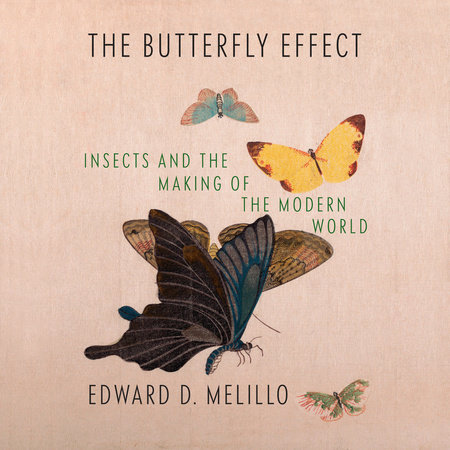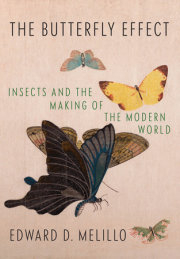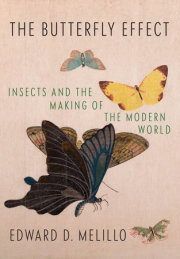1
The Bug in the System
In November 1944, Decca Records released a single featuring Ella Fitzgerald and the Ink Spots. “Into Each Life Some Rain Must Fall” skyrocketed to number one on the top of the Billboard charts in the United States and inaugurated a long-term collaboration between the “First Lady of Song” and the fabled record producer Milt Gabler. A century before this musical milestone, the Ottoman sultan Abdülmecid I (1839–61) founded the Hereke Imperial Carpet Manufacture to supply elaborate silk rugs for his Dolmabahçe Palace on the Bosphorus. These extravagant carpets, among the finest ever woven, featured between three and four thousand knots per square inch. Six decades earlier, on October 19, 1781, Brigadier General Charles O’Hara of His Britannic Majesty’s Coldstream Guards donned his distinctive scarlet officer’s coat, strode onto the battlefield at Yorktown, Virginia, and surrendered the sword of Lieutenant General Charles Cornwallis to Major General Benjamin Lincoln of the American Continental Army.
A trio of more incongruous events, spanning three centuries, is difficult to imagine, yet these episodes share an astonishing feature. They depended on the tremendous productive capacity of domesticated insects. The brittle shellac of Ella Fitzgerald’s 78 rpm record, the gossamer threads woven into the sultan’s silk carpets, and the crimson cochineal used to dye the brigadier general’s jacket entered the circuits of global commerce as secretions from the bodies of tiny invertebrates. Women and men in rural corners of northeastern India, the Ottoman Empire, and southern Mexico painstakingly raised the lac bugs (Kerria lacca), silkworms (Bombyx mori), and cochineal insects (Dactylopius coccus) that secreted the raw materials for these products.
Unwittingly, we have inherited the legacy of human-insect partnerships that yielded Ella Fitzgerald’s shellac, Sultan Abdülmecid I’s silk, and Brigadier General O’Hara’s cochineal. Six-legged creatures have been our unshakable companions and surreptitious roommates for millennia. The average home accommodates a remarkable profusion of insects. In 2017, following a five-continent, five-year examination of residences—ranging from urban high-rises to village bungalows— California Academy of Sciences entomologist Michelle Trautwein and her colleagues concluded, “Our lives are completely mixed up with the bugs that share our homes. . . . Every home you’ve ever lived in, from a rural Peruvian farmhouse to a studio apartment in Paris, is teeming with tiny life.”
In a related investigation, a team of scientists donned headlamps and latex gloves to comb through fifty homes in Raleigh, North Carolina. Scouring kitchen corners, crawl spaces, basements, closets, and air-conditioning vents, they discovered more than ten thousand species of insects, along with myriad spiders, centipedes, millipedes, and other arthropods. This clandestine menagerie was blithely residing alongside its unsuspecting human hosts.
While these findings intrigued some readers and spooked others, they were unsurprising to entomologists and evolutionary biologists. For the entirety of our planetary existence, we have dwelled with insects. We dine together (and, at times, on each other), we travel in tandem, and we sometimes share beds. Such relentless interactions with insects are threaded throughout the human experience. During the spring of 1748, sixteen-year-old George Washington accompanied a team of experienced wilderness surveyors as they trekked through the verdant forests of the Shenandoah Valley. The fledgling apprentice and future United States president was dismayed to find that his bed often consisted of nothing more than “a little straw—matted together without sheets or anything else but only one threadbare blanket with double its weight of vermin, such as lice, fleas, etc.”
Although Washington’s account evoked millennia of infested bedding, some of his European forebears had not regarded cohabitation with lice and fleas as a nuisance. At times, the act of hosting six-legged creatures on one’s body epitomized holiness. The union of vermin and virtue was on vivid display following one of the most notorious assassinations of the Middle Ages. On December 29, 1170, four knights in the service of King Henry II of England murdered the archbishop of Canterbury, Thomas Becket, on the flagstone steps of the prelate’s cathedral altar. Becket’s body lay in the icy church all night. The next day, in preparation for the burial, attendants removed a profuse assortment of garments, including a mantle, a linen vestment, a lamb’s-wool coat, several cloaks, a Benedictine robe, and a shirt. The innermost layer was “a tight-fitting suit of coarse hair cloth, covered on the outside with linen, the first of its kind seen in England. The innumerable vermin [i.e., lice] which had infested the dead prelate were stimulated to such activity by the cold that his hair cloth garment”—an uncomfortable shirt worn close to the skin—“boiled over with them like water simmering in a cauldron [and] the onlookers burst into alternate fits of weeping and laughter between the sorrow of having lost such a head and the joy of finding such a saint.” Suitably, Becket was propelled into the afterlife on the wings of a swarm.
In the annals of Christian piety, Becket’s vigorous infestation was hardly uncommon. The Scottish philosopher David Hume recounted how the Catholic saint Robert Bellarmine (1542–1621) “patiently and humbly allowed the fleas and other odious vermin to prey upon him.
We shall have heaven, said he,
to reward us for our sufferings: But these poor creatures have nothing but the enjoyment of the present life.” Such examples offer a new twist on the dictum “Cleanliness is next to godliness.” For the righteous, the unwashed body provided a safe haven for a holy glut of six-legged creatures.
From the sacred to the profane, insects have channeled our desires. The erotic verses of Anglican cleric John Donne’s Elizabethan-era poem “The Flea” illuminate this role. A young man becomes entranced by a winged bug, which suckles on his flesh and then hops over to feed on the woman of his desires. The stanzas ripen with carnal imagery: “It sucked me first, and now sucks thee / And in this flea our two bloods mingled be.” The couple’s bodily fluids merge within the insect. The creature’s innards have become their “marriage bed . . . cloistered in these living walls of jet.” As the old adage reminds us, a meal sets the table for courtship.
Whether factual or fictional, such scenarios blur the boundaries between species. We are never without insects. This habitual intimacy helps to explain why bugs have so often served as models of determination, productivity, and resilience. During the seventh century b.c.e., Japan received its ancient name Akitsushima—a hybrid of
akitsu (dragonfly) and
shima (island)—from Emperor Jimmu Tennō, who likened the ancient Yamato Province to a dragonfly licking its tail. In Japanese, the dragonfly came to be known as
kachimushi, the “victory insect,” because of its hunting prowess and bravery. Molded onto sword pommels, embroidered into cloaks, carved onto armored chest plates, and displayed prominently on helmets,
kachimushi served as symbols of a samurai warrior’s fortitude in battle and his serenity in domestic life.
Insect behavior offered similar wellsprings of inspiration to the Abrahamic religions of Judaism, Christianity, and Islam. In Proverbs (6:6), the sage king Solomon advises, “Go to the ant, thou sluggard; consider her ways, and be wise,” while the Qur’an (16:68–69) proclaims, “And your Lord revealed to the bee saying: Make hives in the mountains and in the trees and in what they build: Then eat of all the fruits and walk in the ways of your Lord submissively.”
In more recent times, ants and bees have served as exemplars of diligent labor. Manchester, England, a center of textile manufacturing during the Industrial Revolution, features the hardworking bee on its coat of arms, and the landing outside the city’s Great Hall is known as “the Bees.” Similarly, the Confederation of Mozambican Business Associations gives an entrepreneur-of-the-year award, “a statue of an ant, chosen because of this insect’s reputation as a tireless worker.” For the same reasons, the U.S. Navy’s Construction Battalion (“C.B.”)— also known as the “Seabees”—adopted the bee as a symbol of persistence and industriousness. The Seabees’ integral role in installing military infrastructure for Allied operations in the Pacific Theater earned them the motto “The difficult we do now; the impossible takes a little longer.”
The beehive has even provided a convenient model for economic theorists. The Dutch-born physician and political philosopher Bernard Mandeville (1670–1733) is remembered chiefly for his two-volume
Fable of the Bees; or, Private Vices, Publick Benefits. Published first as a poem in 1705, and appearing as part of a more extensive book in 1714, Mandeville’s controversial proposal used the extended metaphor of the social beehive to argue that sinful behaviors, like pride and the pursuit of luxury, led to the general wealth and well-being of society.
Autocrats and demagogues have also relied on insect imagery. When choosing a family emblem for the House of Bourbon, Napoléon Bonaparte rejected the regal fleur-de-lis in favor of the resourceful honeybee. Likewise, the Prussian statesman Otto von Bismarck dreamed of a similarly insectlike precision to life: “If I had to choose the form I would rather live in again, I think it would be as an ant. Just see: this little creature lives under a perfect political organization. All ants are obliged to labour, to lead a useful life; all are industrious, and perfect subordination prevails, with discipline and order.”
The display of exactitude the Iron Chancellor witnessed in the ant colony extends downward from the social network to the level of individual anatomy. Insect bodies are a meticulous marriage of form and function. The word “insect” derives from the Latin term
insectum, a literal translation of the Greek word ἔντομον (
éntomon), meaning “cut into sections.” Indeed, all insects mature from a larval or nymph stage to an adult form with a three-part body composed of a head, a thorax, and an abdomen. This three-part structure is one of their most obvious features.
In addition, they have tough and semitransparent exoskeletons that provide their bodies with a rigid external scaffolding. Such a configuration has advantages for small creatures. Like a knight’s armor, it offers a protective casing against adversaries. Exoskeletons do not expand as the animal grows. In order to enlarge, an insect sheds its old carapace and develops a new one. At first, the replacement coating is malleable like wet papier-mâché, taking time to harden. Because the pull of gravity is minimal on a small body, this evolutionary strategy works. Expand an insect to the size of a human, however, and the body would soon be crushed by the sheer weight of its own shell. This rigid sheath functions because of its built-in flex points. All insects have three pairs of jointed legs, which, quite literally, define the larger arthropod phylum to which insects belong, a grouping that also includes spiders, mites, centipedes, millipedes, and crustaceans (such as crabs, lobsters, crayfish, and shrimp). This Greek term is a fusion of
arthro, which means “joint,” and
pod, meaning “foot” or “leg.”
A pair of twitching antennae are among the most recognizable features of an insect’s body. These protracted sensors give their six-legged owners unprecedented mobility. Monarch butterflies use their wispy probes to dramatic effect. Anticipating the Copernican Revolution by more than 150 million years, migratory monarchs developed a heliocentric existence. Responding to cues from the sun, they use the internal rhythms in their antennae as a solar compass to guide their autumnal exodus from the northern United States and southern Canada. This built-in navigation system allows them to travel as far as twenty-five hundred miles in an astounding journey southward to their overwintering grounds in central Mexico.
An insect’s movements are also guided by a set of compound eyes, which a team of Europe’s leading robotics engineers has referred to as “masterpieces of integrated optics and neural design.” These multifaceted orbs are made up of many tiny ommatidia, clusters of photoreceptors surrounded by support cells and pigment cells. They give insects a sensitivity to a range of wavelengths much shorter than those detectable by the human eye. At the low end of the electromagnetic spectrum, bees are able to distinguish ultraviolet light, which is invisible to humans.* Hemispheric compound eyes also give insects a nearly 360-degree view, a distinct advantage when pursuing prey or fleeing predators.
For many insects, such nimble hunting maneuvers and death-defying stunts are aerial. Most adults have two pairs of wings, which feature pliable membranous tissue and rigid veins for support. Insects are the only invertebrates that can fly. Insect wings carry their owners aloft, provide protection, attract mates, and serve as timely warnings to potential predators. Members of a family of butterflies known as Nymphalidae even use puffy veins on their top wings to assist with hearing. The extraordinary mobility and maneuverability of winged insects give them access to a vast assortment of habitats and food sources unavailable to most of Earth’s animals, including our own species. A few types of insects do not have wings. The wingless insects include such groups as springtails and silverfish. Certain spiders (insects’ arachnid cousins) can “balloon” by spinning a web that acts like a parachute. This allows them to surf the wind to avoid predators and shift locations.
As scientific enterprises go, distinguishing humans from other beings seems like a relatively straightforward undertaking. Yet things get more complicated as we investigate such categorical divisions. Some twenty-five hundred years ago, Plato attempted to answer the question “What is a human being?” He replied, “A featherless biped.” In jest, the notorious gadfly Diogenes the Cynic plucked a chicken and brought the clucking, naked specimen to Plato’s Academy in Athens, announcing, “This is Plato’s man!” Faced with such ridicule, Plato had no choice but to amend his definition to include the caveat “with broad flat nails.”
Plato’s students attempted to add a degree of precision to such fanciful descriptions. Aristotle’s prodigious
Historia animalium, composed in the fourth century b.c.e., marked the Western world’s first known attempt to systematically categorize insects. The Greek philosopher’s observations about these animals were precise for their time but contained errors, such as his assertion that some insects could spontaneously breed from dew, wood, putrefying mud, or dung. Four hundred years later, Roman natural philosopher Pliny the Elder (23–79 c.e.) devoted the entire eleventh book of his thirty-seven-volume
Historia naturalis to insects. Remarking on these abundant yet minute creatures, Pliny contended, “In no one of her works has Nature more fully displayed her exhaustless ingenuity.” Philemon Holland’s 1601 translation of Pliny’s text inaugurated the use of the term “insect” in the English language.
Copyright © 2020 by Edward D. Melillo. All rights reserved. No part of this excerpt may be reproduced or reprinted without permission in writing from the publisher.






